Maya Calendar Conversions
Since 1993, Millersville University of Pennsylvania has offered the 3-credit course Mathematics in Non-European Cultures (MATH 102). The course is a survey of mathematical ideas developed by non-European cultures including, but not limited to, those of Africans, Asians, and Native North, Central and South Americans.
Every summer since 2006, Dr. Ximena Catepillan has offered a special session of the course that includes a week-long trip to Mexico’s Yucatan Peninsula. She teaches the first part, “A Survey of Mathematical Ideas Developed by non-European Cultures,” at Millersville University for one week, and she teaches the second part, “A study of Ancient Maya History, Culture, and Mathematics,” on the Yucatan Peninsula, together with archaeologists from the Maya Exploration Center.
MATH 102 is a general education course designed for students not majoring in mathematics and science. The students who take this course typically major in Art, Anthropology, History, Music, Social Work, and Sociology, among others. During the summer, students from the course visit pyramids, temples, and ruins at the Maya centers of Chichen Itza , Coba, and Ek Balam while working on the mathematics and science of the Mesoamerican civilization. One of the mathematical techniques students learn during the trip is Maya calendar conversion of dates found on the different ancient monuments. We describe here some of the methods students use for calendar conversion during the course.
In this article, we first describe the Maya calendars. Then we give two examples of calendar conversions. Both are needed to fully understand the method. Finally, we propose some exercises and suggest how to use the material in the classroom.
Maya Calendar Conversions - Introduction
Since 1993, Millersville University of Pennsylvania has offered the 3-credit course Mathematics in Non-European Cultures (MATH 102). The course is a survey of mathematical ideas developed by non-European cultures including, but not limited to, those of Africans, Asians, and Native North, Central and South Americans.
Every summer since 2006, Dr. Ximena Catepillan has offered a special session of the course that includes a week-long trip to Mexico’s Yucatan Peninsula. She teaches the first part, “A Survey of Mathematical Ideas Developed by non-European Cultures,” at Millersville University for one week, and she teaches the second part, “A study of Ancient Maya History, Culture, and Mathematics,” on the Yucatan Peninsula, together with archaeologists from the Maya Exploration Center.
MATH 102 is a general education course designed for students not majoring in mathematics and science. The students who take this course typically major in Art, Anthropology, History, Music, Social Work, and Sociology, among others. During the summer, students from the course visit pyramids, temples, and ruins at the Maya centers of Chichen Itza , Coba, and Ek Balam while working on the mathematics and science of the Mesoamerican civilization. One of the mathematical techniques students learn during the trip is Maya calendar conversion of dates found on the different ancient monuments. We describe here some of the methods students use for calendar conversion during the course.
In this article, we first describe the Maya calendars. Then we give two examples of calendar conversions. Both are needed to fully understand the method. Finally, we propose some exercises and suggest how to use the material in the classroom.
Maya Calendar Conversions - The Maya and their Calendars
The civilization of the Maya, which has existed since about 1800 BC on the Yucatan Peninsula, was at its peak during the Classic Period between 250 and 800 AD.
Classical Maya civilization was highly advanced and developed many areas of science. Perhaps the most significant one was astronomy, which was important for agriculture. Based on astronomical observations, the Maya invented an elaborate system of calendars. There are four calendars: Tzolkin Calendar, Haab Calendar, Round Calendar, and Long Count. In this article we discuss some relationships between the calendars from the mathematical standpoint. We illustrate our discussion with actual examples of dates found on a stela in Coba and on the Leyden Plaque, in which we show how to convert from Long Count dates into Tzolkin and Haab dates.
![Figure 1: Millersville University students at Chichen Itza, Mexico, 2007. [PHOTO CREDIT] Figure 1](/sites/default/files/images/upload_library/46/Fig_1_Maya.jpg)
Figure 1: Millersville University students at Chichen Itza, Mexico, 2007 (Photo by Ximena Catepillán.)
Tzolkin Calendar
The Tzolkin Calendar, also called the Tonalamatl or Sacred Calendar, uses 20 names of gods with 13 days attached. The names of the gods are: Imix, Ik, Akbal, Kan, Chicchan, Cimi, Manik, Lamat, Muluc, Oc, Chuen, Eb, Ben, Ix, Men, Cib, Caban, Etznab, Cauac, and Ahau.
The consecutive dates are formed as follows: 1 Imix, 2 Ik, 3 Akbal, 4 Kan, …, 12 Eb, 13 Ben, 1 Ix, 2 Men, …, etc.
As a result 260 dates are formed, which constitute 1 Tzolkin year. The year begins with 1 Imix and ends with 13 Ahau.
Haab Calendar
The Haab Calendar, also called the Vague, Solar, or Civil Calendar, was used by farmers. It uses 18 month names (gods) of 20 days each to make a year of 360 days plus five “unlucky days” or Uayeb.
The names of the gods are: Pop, Uo, Zip, Zotz, Tzec, Xul, Yaxkin, Mol, Chen, Yax, Zac, Ceh, Mac, Kankin, Muan, Pax, Kayab, Cumku, and Uayeb (month of 5 unlucky days).
To each god the numbers 0, …, 19 are attached as in our Gregorian calendar. The first date of the year is 0 Pop followed by 1 Pop, 2 Pop, …, 19 Pop, 0 Uo, 1 Uo, …, 18 Cumku, 19 Cumku, 0 Uayeb, 1 Uayeb, 2 Uayeb, 3 Uayeb, 4 Uayeb.
As a result 365 dates are formed, which constitute 1 Haab year.
Round Calendar
The Maya merged the Tzolkin and Haab calendars into a superior cycle known as the Calendar Round. The least common multiple of 260 and 365 is 18,980. Thus, this combined calendar consists of 18,980 days, which is 73 Tzolkin years (73 x 260), or 52 Haab years (52 x 365). An example of a Round Calendar date is 4 Ahau 8 Cumku, in which 4 Ahau is the Tzolkin date and 8 Cumku is the Haab date.
Long Count Dates
The Round Calendar date gives us the exact day within one cycle of 18,980 days, but we cannot locate the date in time as the Round Calendar cycles are not numbered (like our years, e.g. 2009). To locate dates over long periods of time, the Maya used Long Count dates.
The shortest period in the Long Count was the kin (day). Then:
1 uinal = 20 kins
1 tun = 18 uinals = 18 x 20 kins = 360 kins
1 katun = 20 tuns = 20 x 18 x 20 kins = 7200 kins, and
1 baktun = 20 katuns = 20 x 20 x 18 x 20 kins = 144,000 kins.
For example, the Long Count date 9. 12. 2. 0. 16 represents 9 baktuns, 12 katuns, 2 tuns, 0 uinals, and 16 kins. This means there have been 9 x 144,000 + 12 x 7200 + 2 x 360 + 0 x 20 + 16 = 1,383,136 kins since the beginning of the current era. An era or creation of 13 baktuns has 13 x 144,000 = 1,872,000 kins, which is approximately 5,128 years.
According to the Popol Vuh, a book recording the creation story from Maya mythology, the beginning date, or the day of the creation of the world, is the combination 4 Ahau 8 Cumku (Round Calendar date) or 0. 0. 0. 0. 0 (Long Count date), which corresponds most recently to August 11, 3114 BC. We are now living in the fourth creation. The previous creations have ended at the conclusion of the 13th baktun, or in Long Count dates, the day after 12. 19. 19. 17. 19. Another 12. 19. 19. 17. 19 will occur on December 20, 2012, followed by 13. 0. 0. 0. 0, or 4 Ahau 3 Kankin, on December 21, 2012, the day of the winter solstice in the northern hemisphere.
Maya Calendar Conversions - December 21, 2012
The date December 21, 2012, has received much media attention in recent months and years. The popular disaster movie, 2012, released toward the end of 2009, depicted cataclysmic events occurring on this day. Dr. Edwin Barnhart, Director of the Maya Exploration Center, has a more optimistic view of the significance of the date December 21, 2012:
While it is true that December 21, 2012 marks the end of a grand cycle in the Long Count calendar, none of the thousands of Maya hieroglyphic texts says a word about disasters, new ages of enlightenment, or the end of time. The prevailing notion that the Maya calendar must reset in 2012 may stem from confusion between a “world age” and a “cycle of time.” Maya myth tells us that the third Creation lasted 13 Baktuns. But that is not to say that the present world age will also last 13 Baktuns.
One thing is certain: the Maya regarded the turn of katuns and baktuns as times of renewal and transformation. If the ancient Maya could witness the current crop of doomsayers wringing their hands over the arrival of the 13th Baktun, they would probably be dismayed. Inevitably, changes were to be ushered in through dedicated action, sacrifice, and joyful celebration.
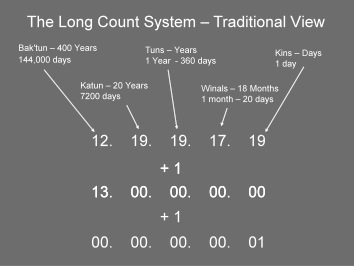
Figure 2: From Dr. Edwin Barnhart’s lecture on 2012 at Palenque, Mexico, August 2009.
Maya Calendar Conversions - Calendar Conversions: Example 1
In this section we will present a method of converting a Long Count date to the corresponding Round Calendar date. This means, given a Long Count date, we will locate it in the Round Calendar 18,980-day cycle by identifying the corresponding Tzolkin and Haab dates.
The Long Count date 9. 3. 10. 5. 3 (9 baktuns, 3 katuns, 10 tuns, 5 uinals, 3 kins) is carved in Stela D in Cobá, Mexico (see Figure 3).
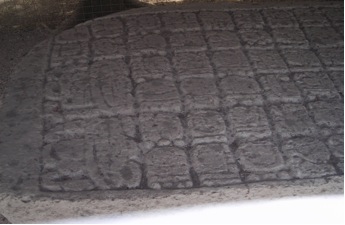
Figure 3: Stela D (Photo by Millersville University student Brian Viera, 2009.)
a) We compute the number of kins (K).
| Baktun: | 9 x 144,000 | = | 1,296,000 |
| Katun: | 3 x 7,200 | = | 21,600 |
| Tun: | 10 x 360 | = | 3,600 |
| Uinal: | 5 x 20 | = | 100 |
| Kin: | 3 x 1 | = | 3 |
| Total: | K | = | 1,321,303 |
b) Now we divide K by 18,980 to determine the number of full Round Calendar cycles that elapsed up to K, and, more importantly, to find the remainder, which gives the location of the date within one Round Calendar cycle:
1,321,303/18,980 = 69 + 11,683/18980.
This means that 69 Round Calendar cycles elapsed and the date we seek is the 11,683rd kin or day from the starting date of 4 Ahau 8 Cumku in the Round Calendar cycle. Let R = 11,683.
c) Now we will determine the Tzolkin date. To do this, we divide R by 13 (days) and by 20 (gods):
11,683/13 = 898 + 9/13
11,683/20 = 584 + 3/20.
This means that 11,683 days consist of 898 13-day cycles, plus A = 9 extra days, and also of 584 20-day cycles of gods, plus B = 3 extra days (or gods). Since the Tzolkin date for the beginning of the Maya world was 4 Ahau, we add 9 days to 4 days and 3 gods to Ahau, obtaining the Tzolkin date 13 Akbal.
d) Haab Calendar Date: To determine the Haab date we begin by dividing R by 365, the number of days in the Haab calendar:
11,683 /365 = 32 + 3/365.
This means that 11,683 days consist of 32 Haab Calendar cycles, plus H = 3 extra days. Since the Haab date for the beginning of the Maya world was 8 Cumku, we add 3 days to 8 days, obtaining the Haab Calendar date 11 Cumku.
Note that if the remainder H satisfies 0 ≤ H ≤ 11, the Haab Calendar date is in the month of Cumku and is 8 + H Cumku. If 12 ≤ H ≤ 16, the Haab date is one of the 5 days of Uayeb; namely, H – 12 Uayeb. Finally, if 17 ≤ H ≤ 364, the Haab Calendar date falls between 0 Pop and 7 Cumku (inclusive). Example 2 will illustrate this last case.
e) Round Calendar date is 13 Akbal 11 Cumku by virtue of combining the results of parts (c) and (d).
The Convergence article "Maya Cycles of Time," by Sandra Monteferrante, provides an excellent graphic of the Calendar Round with an iteractive calendar, which we have reproduced in Figure 4.
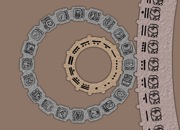
Figure 4: Interactive Calendar Round
The Pictographic Maya Calendar Converter, developed by Charles Hartley of the University of Colorado, converts Julian/Gregorian calendar dates to Long Count, Tzolkin calendar, and Haab calendar dates, and includes drawings depicting how the Maya wrote the dates. Millersville University students in Math 102 regularly use this Java Applet to check the accuracy of the calendar conversions they have done by hand.
Maya Calendar Conversions - Calendar Conversions: Example 2
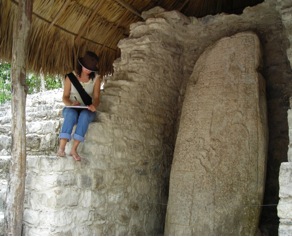
Figure 5: Millersville University student Kaleena Rodriguez in Coba, Mexico, 2006 (Photo by Ximena Catepillán.)
The Long Count date 8. 14. 3. 1. 12 (8 baktuns, 14 katuns, 3 tuns, 1 uinals, 12 kins) is carved in the Leyden Plaque. This plaque, a jade pendant, has the shape of a miniature stela with a human figure in the front and a long count date in the back. It is possible that the plaque is originally from Tikal.
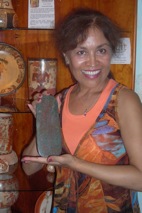
Figure 6: Ximena Catepillán holding a replica of the Leyden Plaque at a store in Valladolid, Mexico, 2009 (Photo by Alejandra Merino Trujillo.)
a) Compute the number of kins (K).
| Baktun: | 8 x 144,000 | = | 1,152,000 |
| Katun: | 14 x 7,200 | = | 100,800 |
| Tun: | 3 x 360 | = | 1,080 |
| Uinal: | 1 x 20 | = | 20 |
| Kin: | 12 x 1 | = | 12 |
| Total: | K | = | 1,253,912 |
b) Now we divide K by 18,980 to determine the number of full Round Calendar cycles that elapsed up to K, and, more importantly, to find the remainder, which gives the location of the date within one Round Calendar cycle:
1,253,912/18,980 = 66 + 1,232/18980. This means that 66 Round Calendar cycles elapsed and the date we seek is the 1,232nd kin or day from the starting date of 4 Ahau 8 Cumku in the Round Calendar cycle. Let R = 1,232.
c) Now we will determine the Tzolkin date. To do this we divide R by 13 and by 20:
1,232/13 = 94 + 10/13
1,232/20 = 61 + 12/20.
This means that 1,232 days consist of 94 13-day cycles, plus A = 10 extra days, and also of 61 20-day cycles of gods, plus B = 12 extra gods. Since the Tzolkin date for the beginning of the Maya world was 4 Ahau, we add 10 days to 4 days, which gives 14. But there are only 13 day numbers in the Tzolkin calendar, so our Tzolkin number is 1. To see this, we imagine the numbers 1 through 13 on a circle (like the numbers 1 through 12 on a clock face). If we begin at 4 and move 10 days forward, we will end at 1. Another way to say this is to say that 14 modulo 13 is 1. To find the appropriate god, we advance 12 steps clockwise (mod 20) from Ahau around the Tzolkin 20-cycle to the god Eb. Therefore the Tzolkin date is 1 Eb.
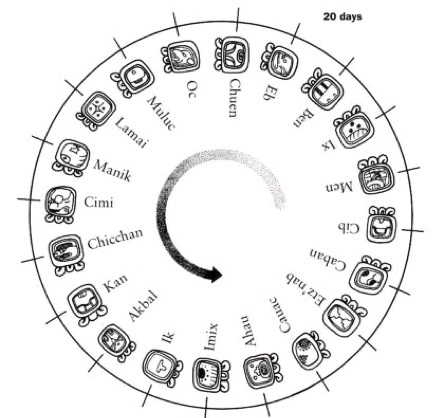
Figure 7: The Tzolkin 20-cycle (Robinson 2002)
d) To determine the Haab Calendar date we begin by dividing R by 365, the number of days in the Haab calendar:
1,232/365 = 3 + 137/365.
This means that 1,232 days consist of 3 365-day Haab Calendar cycles, plus H = 137 extra days. The day we seek is the 137th day from the starting date of 8 Cumku in the Haab Calendar cycle. As previously noted, since 17 ≤ H ≤ 364, the Haab Calendar date we seek falls between 0 Pop and 7 Cumku (inclusive). If we replace the remainder H by H’ = H – 17 = 137 – 17 = 120, the day we seek is the 120th day from the date 0 Pop in the Haab Calendar.
Next we divide H’ = 120 by 20, the number of days per month (or god) in the Haab Calendar:
120/20 = 6 + 0/20.
This means exactly 6 20-day months have passed since 0 Pop. If we count 6 gods forward from Pop, we find the god Yaxkin. Therefore, the Haab Calendar date is 0 Yaxkin.
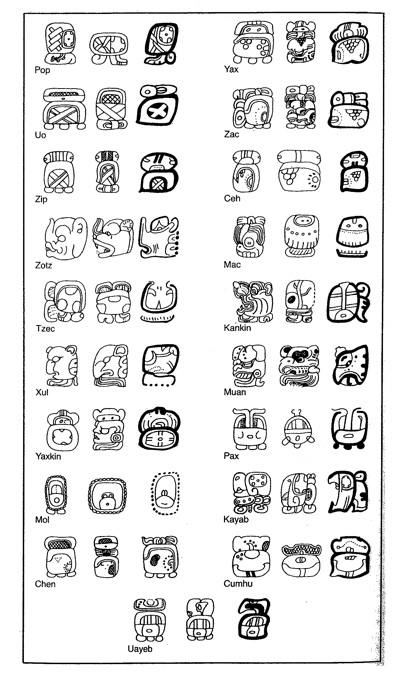
Figure 8: The Haab 18-month name glyphs and the Uayeb (Aveni 1980)
e) We conclude that the Round Calendar Date is 1 Eb 0 Yaxkin.
Maya Calendar Conversions - In Summary: Calendar Conversion Methods
The method described in Examples 1 and 2 can be expressed in general terms as follows:
- Compute the number of kins K.
- Divide K by 18,980; the remainder is R.
- Tzolkin date: Divide R by 13 and by 20 to obtain respective remainders A and B. To get the Tzolkin number, we imagine the numbers 1 through 13 on a circle, locate 4 and move A places ahead. To get the Tzolkin god, we look at the list of Tzolkin gods and, imagining them on a circle, locate Ahau and move B places ahead.
- Haab date: Divide R by 365; the remainder is H.
- If 0 ≤ H ≤ 11, the Haab date is 8 + H Cumku.
- If 12 ≤ H ≤ 16, the Haab date is H – 12 Uayeb.
- Finally, if 17 ≤ H ≤ 364, the Haab date falls between 0 Pop and 7 Cumku (inclusive), and can be found as follows.
- Compute H’ = H – 17.
- Divide H’ by 20; the quotient is Q, the remainder is W.
- The Haab number is W and the Haab month (god) is Pop + Q, so that the Haab date is W Pop + Q.
Finally, the Round Calendar date is the Tzolkin date followed by the Haab date.
More sophisticated mathematics students could approach these examples using more formal modular arithmetic notation. They would consider the dates in both the Tzolkin and the Haab calendars as ordered pairs (Number, God). In the Tzolkin Calendar, 1 ≤ Number ≤ 13 and God is taken from the Tzolkin 20-cycle of gods. The following day would have date given by (Number + 1 (mod 13), God + 1 (mod 20)) and, in fact, for any positive integer k, the day k days later would have date given by (Number + k (mod 13), God + k (mod 20)). In the Haab Calendar, 0 ≤ Number ≤ 19, and God is taken from the Haab 18-cycle of gods together with Uayeb. Here, the day after (Number, God) would have date (Number+1, God) if either God ≠ Uayeb and Number < 19, or God = Uayeb and Number < 4. Otherwise, the following day has date (0, God + 1 (mod 19)). Since the Haab date k days later, for any positive integer k, depends on how close the original date is to the five days of Uayeb, Haab dates for k > 1 are even more complicated to describe using modular notation.
Maya Calendar Conversions - Exercises (with answers)
Exercises
1) Find the number of kins for the Long Count date 8. 12. 14. 8. 0. This Long Count date was found on Stela 29 in the ruins of Tikal, Guatemala, and it is believed to be the oldest dated Maya inscription found thus far.
2) Find the Tzolkin Calendar and Haab Calendar dates for the Long Count date in Exercise 1.
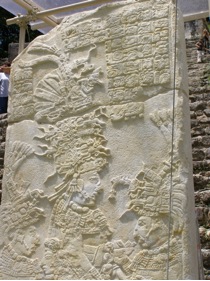
Figure 9: Stela 2 at Bonampak (Photo by Ximena Catepillán, Bonampak, Mexico, August 2009.)
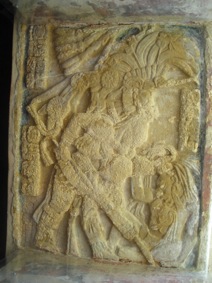
Figure 10: Lintel 2 at Bonampak (Photo by Ximena Catepillán, Bonampak, Mexico, August 2009.)
Stela 2 depicts Chaan-Muan II, the last ruler of Bonampak, during a ceremony with his mother and wife (see Figure 9). The date in Lintel 2 (see Figure 10) represents a conquest scene in which Shield-Jaguar’s descendant stands over a fallen prisoner.
3) Subtract the Long Count date 9. 17. 5. 8. 9, found on Stela 2 (Figure 9) in Bonampak, Mexico, from the date 9. 17. 16. 3. 8, found on Lintel 2 (Figure 10), also in Bonampak, to find the length of time between these two dates. Give your answer in tuns, uinals, and kins.
4) In Tikal, Guatemala, the oldest Long Count date found is 8. 12. 14. 8. 0 (Stela 29) and the most recent is 10. 2. 0. 0. 0 (Stela 11). Determine approximately the number of years between the dates. This computation will give you an approximation of the duration of the Maya settlement at Tikal.
5) Convert the three Long Count dates 9. 17. 5. 8. 9, 9. 17. 16. 3. 8, and 10. 2. 0. 0. 0 from Exercises 3 and 4 to Round Calendar dates.
Answers
1) 1,243,600 kins
2) 11 Ahau and 8 Uo
3) 10 tuns, 12 uinals, and 19 kins
4) Approximately 577 years
5) 6 Muluc 17 Yaxkin; 4 Lamat 6 Cumku; and 3 Ahau 3 Ceh
Maya Calendar Conversions - Conclusion
The method of converting Long Count dates into Tzolkin Calendar and Haab Calendar dates presented here is based only on the description of the calendars and not on any historical record of calendar conversion. Most known Maya dates – found on stelae, lintels, etc. – are presented graphically in pictogram forms or using dot-and-bar numeration to display all three of these ways of reckoning time.
In classroom practice, the principles of the calendars should first be explained in detail. Subsequently, one may present the two examples given in this article to the class, or ask the students to work through these examples, perhaps in small groups. Alternatively, one can lead students to construct their own methods of calendar conversion by asking them to perform simpler tasks, such as to compute the date 7 days, 14 days, 21 days, and 210 days from the starting date of 8 Cumku, in the Haab Calendar, prior to tackling conversions like those given in Examples 1 and 2.
Since the conversions involve a good amount of the so-called “clock” arithmetic (modular arithmetic), they can be used as an introduction to or another illustration of modular arithmetic (different from the clock) taken from real life. Converting a given number of kins to a Tzolkin Calendar date requires the use of (mod 13) and (mod 20) arithmetic. To do the same for the Haab Calendar date, we use (mod 365) arithmetic.
Studying Maya calendars also gives us an opportunity to discuss the history and culture of an important ancient civilization. In summary, Maya calendar conversions provide a wonderful educational tool that can be used for both university and high school students.
Maya Calendar Conversions - About the Authors/References
About the Authors
Ximena Catepillán is a Professor of Mathematics at Millersville University of Pennsylvania. Her research areas include Operator Theory, and Ethnomathematics with an emphasis on the mathematics and science of the Pre-Columbian Americas. In 1993 she developed the course "Mathematics in non-European Cultures" for non-mathematics and science majors. She travels to Mexico with the course every summer, focusing on the mathematics and science of the Maya. Ximena was an associate profesor of mathematics at Universidad de Magallanes, Punta Arenas, Chile before moving to the United States.
Waclaw Szymanski is a Professor of Mathematics at West Chester University of Pennsylvania. He received his M.A. in Mathematics from the Jagiellonian University in Krakow, Poland. He then received his Ph.D. and later D.Sc. from the Institute of Mathematics, Polish Academy of Sciences. His main research areas are the Theory of Operators in Hilbert Spaces and Operator Algebras. He is also interested in Ethnomathematics - in particular, in Pre-Columbian Americas. His interests include languages (Latin, Polish, Spanish, Russian), piano playing, and traveling.
References
1. Ascher, Marcia. Mathematics Elsewhere: An Exploration of Ideas Across Cultures, Princeton University Press, 2002.
2. Aveni, Anthony. Skywatchers of Ancient Mexico. University of Texas Press, Austin, 1980.
3. Closs, Michael. Native American Mathematics, University of Texas Press, Austin, 1996.
4. De Landa, Diego. Relación de Las Cosas de Yucatán, Editorial Merida, Mexico, 1938.
5. Joseph, George Gheverghese. The Crest of the Peacock: Non-European Roots of Mathematics, Penguin Books, 1989.
6. Matthews, Peter. Notes on the Dynastic Sequence of Bonampak, Part 1, edited by Merle Greene Robertson, University of Texas Press, Austin, 1980.
7. Monteferrante, Sandra. Maya Cycles of Time, Convergence, DOI: 10.4169/loci003886
http://www.maa.org/publications/periodicals/convergence/maya-cycles-of-time
8. Morley, Sylvanius, George Brainerd, and George Sharer. La Civilización Maya, Fondo de Cultura Economica, Mexico, 1947.
9. Morley, Sylvanus, Brainerd, George and Sharer, George. The Ancient Maya, Stanford University Press, 1947.
10. Robinson, Andrew. The 260-day Count of the Maya, McGraw-Hill, 2002.
11. Tedlock, Dennis. Popol Vuh: The Definitive Edition of The Mayan Book of The Dawn of Life and The Glories of Gods and Kings, Touchstone, 1996.
12. Zosi, Claudia. Calendario Maya 2, Editorial Kier, Argentina, 2004.
Resources
1. Interactive Calendar Round: http://www.getflashy.com/stuff/cal_round.html
2. Maya Exploration Center: http://www.mayaexploration.com/index.php
3. Pictographic Maya Calendar Converter:
http://users.hartwick.edu/hartleyc/mayacalendar/mayacalendar.html